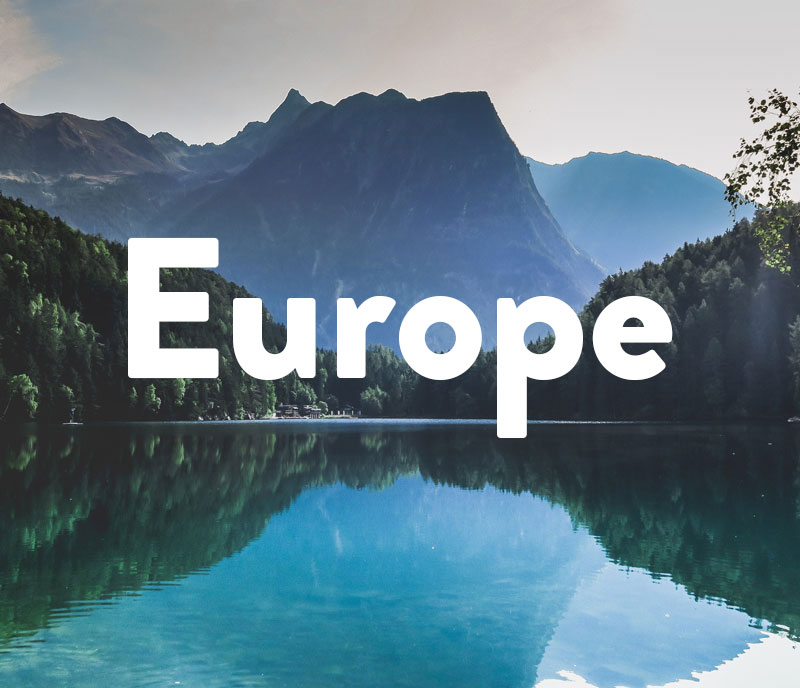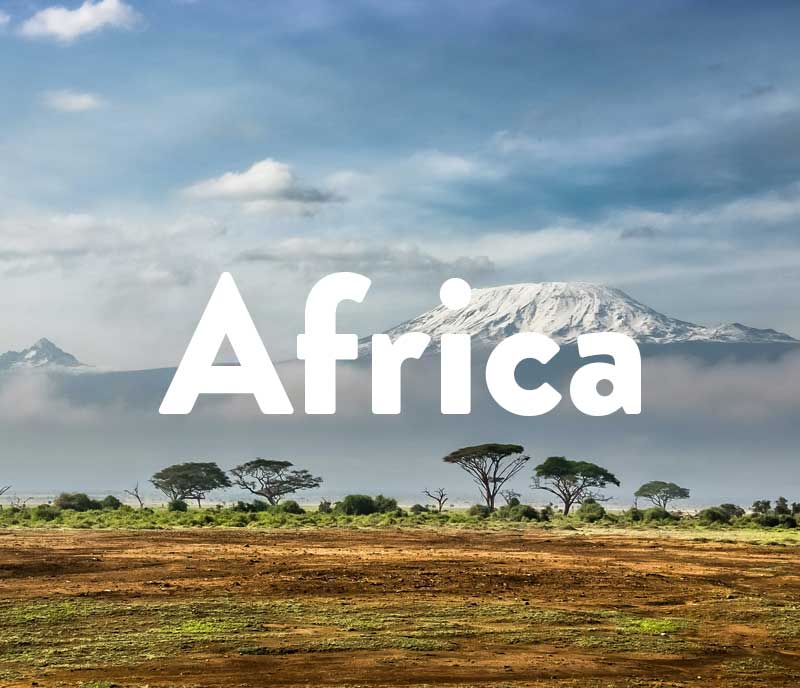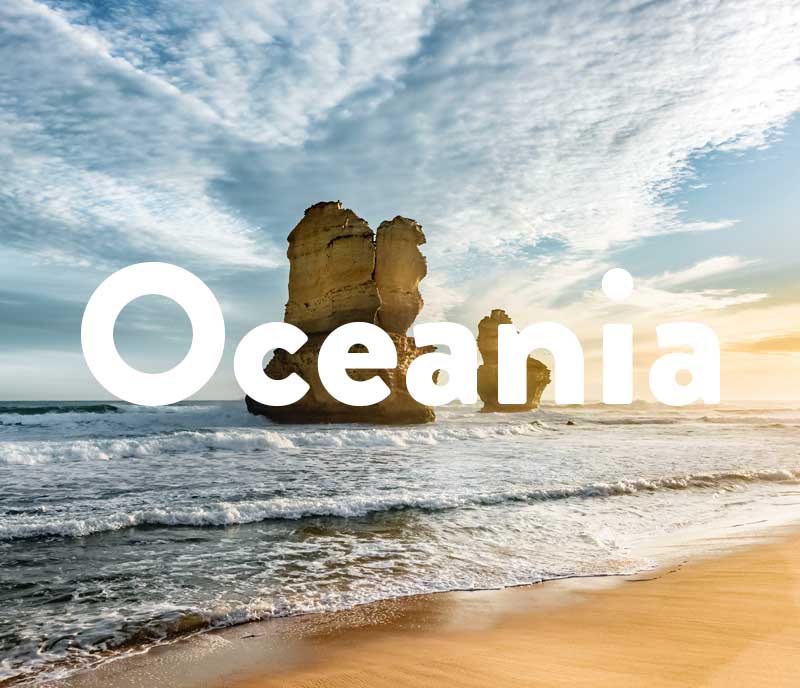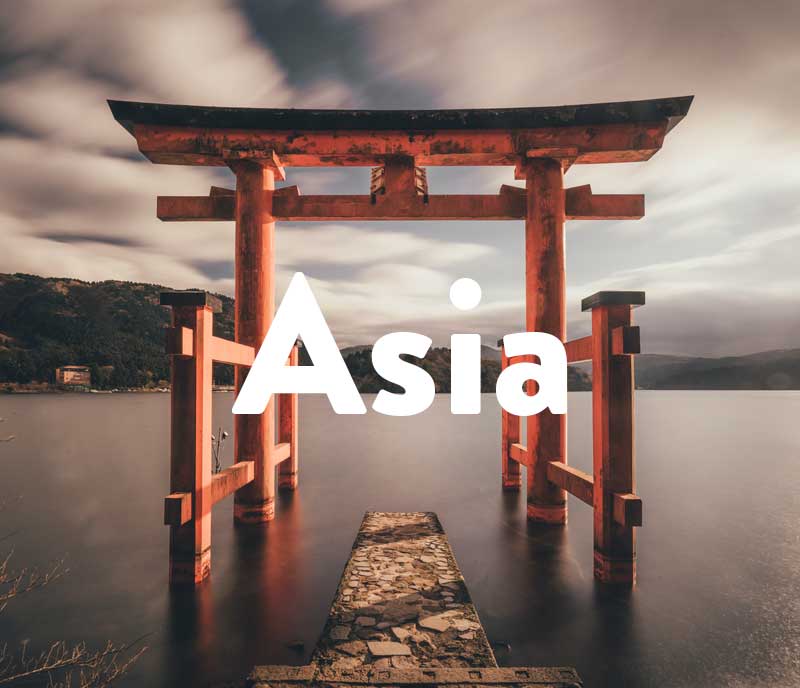You’ve always wanted to go on an adventure trip to Latin America? In that case, the wonderfully diverse country of Argentina is exactly the right place for you – and here you’ll find its many different scenery settings and culinary delights (you have to taste its world-famous beef)! You can also dive into a world of fiery tangos or maybe even hit the dance floor yourself.
All the important information, packing lists, tips and links to your perfect Argentina vacation can be found right here!
Dive into our (free) travel guides below!
.
.
.
.
.
.
.
.
The Key Info
With a total area of 2,780,400 km², Argentina is one of the largest countries in the world. As the eighth largest state in the world, the Latin American country is only behind, for example, Russia, Canada and the USA. 44 million people live in Argentina on the continent of South America. Of this, 2.9 million are from the capital, Buenos Aires, which is divided into 48 urban areas.
The following states share borders with Argentina: Bolivia, Brazil, Chile, Paraguay and Uruguay. By far the longest border is shared with Chile – at 5308 kilometers. To the east of the country lies the Atlantic Ocean.
The national language is Spanish, but there are also more or less common minority languages, such as Quechua and Guaraní.
Argentina in numbers
- Population: 44 million inhabitants
- Total size of the country: 2,780,400 km²
- Capital city: Buenos Aires
- Currency: Argentine peso
- Language: Spanish
- Religion: Roman Catholic (71%), Protestants (9%), non-religious (11-13%)
The 5 largest cities in Argentina
The largest cities in Argentina are Buenos Aires as the state capital, Gran Córdoba, Gran Rosario, Gran Mendoza and Gran San Miguel de Tucumán.
# 1 Buenos Aires
With almost 15 million inhabitants, Gran Buenos Aires is the largest metropolitan area or conurbation in Argentina. It is divided into 24 partidos. Buenos Aires, the heart of Gran Buenos Aires, is home to around 2.9 million people. This is the political, cultural and economic center of Argentina and is divided into 48 partidos.
Buenos Aires is well known for Avenida 9 de Julio and the Obelisk in Plaza de la Républica.
The coolest areas in Buenos Aires are the harbor district and Palermo, which is also often referred to as the hipster district. In La Boca you will find the tango parts El Caminito, which is especially known for its color.
If you are in Buenos Aires, you must visit the Plaza de Mayo. Not far from the square are the Cathedral of Buenos Aires, the Town Hall and much more. Here you can learn more about the history of the Plaza de Mayo (insert links).
#2 Gran Córdoba
Lying in the foothills of Sierras Chicas on the Suquía River, this city is the capital of its namesake province, Córdoba Province. Founded back in the 16th century by Spanish colonists, this city is one of the oldest in Argentina and as such has a lot of history. Take a look around the National University of Córdoba for instance, which gave the city the nickname, La Docta (the learned). It was the first university in Argentina. Fast forward to nowadays and the city has around 1.3 million inhabitants.
Cathedrals, plazas and paseos, this place is a masterpiece of architecture. Take a walking tour of the city and experience the amazing culture here.
#3 Gran Rosario
With just under 1.3 million citizens, Gran Rosario is the third largest city in Argentina and just four hours on the bus from Buenos Aires. Advantageously placed on the Paraná River, this place is well known for its gorgeous waterfront and beaches, as well as good food and friendly locals.
Take a cruise or kayak along the river to get a fantastic view or visit the birthplace on the famous revolutionary, ‘Che’ Guevara or see his statue.
#4 Gran Mendoza
Vineyards and wineries galore. This is THE place to visit if you’re a wine-lover. Close enough to cycle around, you can visit a few in the region and come away with some class bottles. (You can even stay the night at some vineyards!)
Gran Mendoza also happens to be located right near the Andes so bring your hiking boots. If you do go, head to Aconcagua – the tallest mountain in South America!
Take some time to explore the city too though! It’s got museums, good food and beautiful architecture.
#5 La Plata
With a population of around 760,000, La Plata, found in the province of Buenos Aires, is actually the capital of the area. It was founded in the late 19th century for the purpose following the federalization of Buenos Aires.
The Museo de La Plata is easily one of the most popular attractions in La Plata, and given its status of being one of the best natural history museums in the world, it’s not hard to see why. And with its neoclassical style, the building itself is interesting.
The Paseo del Bosque is also worth a visit. Take a trip to the botanical gardens or boat on the lake here.
TOP Tourist Attractions
# 1 Los Glaciares National Park
The park was added to the World Heritage List by UNESCO in 1981. Tourists from all over the world come here every year to see the granite mountains (like Cerro Torre, for example), lakes and glaciers (e.g. Upsala Glacier). The start of each tour begins in either the village of El Chaltén or El Calafate. The temperate climate makes it a year-round destination.
# 2 The Aconcagua
Towering at 6961 meters, this is the highest mountain in South America. In the Andes, close to the Chilean border, it attracts many mountaineering tourists every year, because it is considered a fairly easy and climbable goal. You can get permission to climb the mountain in the Aconcagua Park administration.
# 3 Iguazú National Park
This national park is located on the Brazilian border. Through the park flows the river Iguazú, which then falls as Iguazú Falls up to 82 meters in depth. Over its length of 2.7 kilometers, there are 20 larger and 255 small waterfalls.
# 4 Ruta Nacional 40
One of the longest highways in the world is the Ruta Nacional 40. It is 5301 meters long, meaning you pass the various landscapes and climatic zones of Argentina. But beware: in some areas the road is not easy to drive. Clearance crews are constantly working to keep the Ruta Nacional 40 in good condition.
# 5 Cerro de los siete colores
This mountain awaits with its colorful splendor. It is located in a gorge, the Quebrada de Humahuaca, in northwestern Argentina. It has a height of 2460 meters.
Holidays in Argentina
- January 1: Año Nuevo (New Year)
- March 24: Día de la Memoria (commemoration of the military coup of 1976)
- Jueves Santo (Maundy Thursday), Viernes Santo (Good Friday) and Pascuas (Easter)
- April 2: Día del Veterano y de los Caídos en la Guerra de Malvinas (Day of the Islas Malvinas)
- May 1: Día del Trabajador (Labor Day)
- May 25: Día de la Patria (Declaration of Independence of Spain on May 25, 1810)
- June 20: Día de la Bandera Day of the national flag (Día de la Bandera, officially: Paso a la Inmortalidad del General Manuel Belgrano)
- July 9: Día de la Independencia (recognition of independence by Spain on July 9, 1816)
- August 17: Día de San Martín (Memorial in honor of General José de San Martín)
- October 12: Día de la Raza (Day of the discovery of America by Christopher Columbus)
- December 8: Inmaculada Concepción de María (Maria Conception)
- December 24: Nochebuena (Christmas Eve, half bank holiday)
- December 25: Navidad (Christmas, bank holiday)
- December 31st: Fin de año (New Year’s Eve, part bank holiday)
Do I Need a Visa?
The following documents are required as European citizens: a passport or provisional passport. An identity card is not sufficient to get into Argentina.
Children need their own passport.
A European citizen needs a visa if they plan on staying longer than 90 days.
Argentinian Currency
The national currency is the Argentine Peso (ARS). 1 peso is divided into 100 centavos (¢). Banknotes are available at 2, 5, 10, 20, 50, 100, 200, 500 and 1000 pesos, and coins at 5, 10, 25, 50 centavos, 1 peso and 2 pesos.
Money / Credit Cards: Credit cards are particularly common in Buenos Aires, so finding the right bank for you should not be a problem.
When traveling outside of major cities, such as Buenos Aires or Córdoba, it is advisable to pack enough cash.
Dos and Don’ts in Argentina
These are the rules and practices that you need to know when travelling to Argentina, to avoid feeling uncomfortable or even being disrespectful.
Get your pen and notepad out, this is particularly important!
| Do | Don’t |
| Start rocking the onion look (because the weather conditions in Argentina are just as diverse as its landscapes) | Jumping the queue (this is considered extremely rude) |
| Scan your most important travel documents and store them digitally (for example, in the email inbox) | Alcohol consumption on the streets |
| Travel by bus through Argentina – train connections aren’t great and domestic flights can be pricey. Some buses have comfortable berths and even sleeping areas (cama seats) Trips can take 12-24 hours. | Walking around after dark (it’s best to call a taxi from the hotel). But don’t get in a taxi you waved down on the street |
| Eat asado in Parrillas (a grilled type of beef including offal and spicy sausages (chorizo)) | Do not leave the big cities without cash (withdrawing money is difficult here) |
| In places that aren’t safe always have a small amount of money to hand over in the event of a robbery. | Wear jewelry visibly. |
Must-Haves for Your Argentina Packing List!
Since Argentina has many different landscapes and weather conditions, a general packing list is difficult. But what can not be missing under any circumstances is:
- Rainwear or waterproof clothing (especially if you are in Iguazu National Park and near the waterfalls)
- Clothes that are suitable for the layered onion look (what you pack exactly depends on the duration of the trip)
- Yes, these shouldn’t be left off either: finer, thinner clothes, if you are traveling in the city
- At least one set of fancy clothes (just in case you focusing on the walking tours … you never know where your evening might end up)
- A small wallet that you can wear
- Complete toiletry bag
- The correct travel adapter (which?)
- Suncream
- The Taxi App (Easy Taxi, Link)
Secret tips from bloggers worldwide
- The village, San Antonio de Areco.
- Laguna Torre: a lake in Los Glaciares National Park, with a view of Mount Fitz Roy
- Mendoza: it’s located in western Argentina, in the province of Mendoza. It’s a well-known wine region, with a wine feast of over 3 months, peaking in March.
TOP Instagrammable Places in Argentina
- #caminito (273k posts)
- #purmamarca (88.3k posts)
- #jujuy (494k posts)
- #santelmo (547k posts)
- #iguazu (312k posts)
- #talampaya (13.8k posts)
- #patagonia (4.9m posts)
Fun Facts About Argentina
Did you know..?
..that Argentina is one of the TOP meat eaters of the world? Per capita an Argentinian eats on average 101.7 kilograms of meat a year (as of 2011)
..that the Argentineans like to eat gnocchi at the end of the month, or more precisely on the 29th of each month? This custom goes back to Italian immigrants, who at the end of the month always had little money left meaning they had to eat cheap food.
.. that Argentinian cowboys, mostly living in the pampas, are called gauchos?
…that a pregnant Argentinian was sent to the Antarctic in 1977? The reason being that they wanted to claim some of the Antarctic for themselves. So Emilio Palma was the first human born on this continent (that we know of!)
Listening to the radio is very popular in Argentina: they were the first to broadcast a radio program worldwide (1920). And even today the medium is still popular: the country has the highest proportion of radio listeners worldwide
Not done reading..?
- Winter city breaks 2024 — 10 wonderful destinations around the world
- Holiday at home — plan a relaxing autumn staycation
- Autumn photography — 10 tips for capturing seasonal snapshots
- Tips for your autumn trip — our autumn favourites
- City breaks in autumn 2024 — 8 unforgettable destinations across Europe







